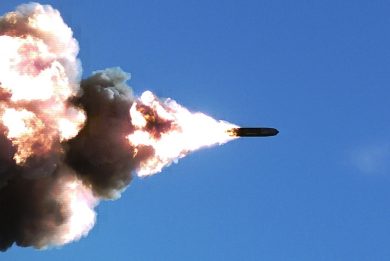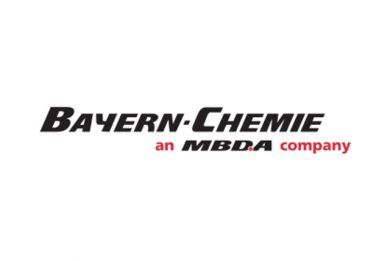
Sceptre ramjet-powered 155 mm artillery ammo: long range and high accuracy Silicon Valley-style from Tiberius Aerospace
The company name should not sound familiar to anyone, as it has surfaced only today. “The company was founded in 2022, on the heels of the invasion from Russia into Ukraine,” Chad Steelberg, the founder and CEO explained, adding that after considering a series of potential options to enter the defence market, “We settled on artillery for a handful of different reasons, one being the wide deployed utilisation of 155 mm rounds in land warfare all over the world, and primarily in Ukraine.” Three years later Tiberius Aerospace unveils the Sceptre
Before getting into technicalities, it is to note that Tiberius Aerospace is a quite peculiar company in the defence world; bot the founder and the co-founder, Andy Baynes, come from Silicon Valley experiences, and are definitely technology guys rather than operational background, although they met while evacuating around 100 Ukrainians into France, witnessing the destruction and devastation caused by the war.
With a manpower of around 20 people, all of them scientists and engineers, Tiberius Aerospace adopts the Silicon Valley approach. “We don’t do manufacturing, we licence IP,” Chad Steelberg explains. “We are a company that can do design, computational fluid dynamics analysis, manufacturing using both additive and real-time CNC, to produce a design within days, getting to the live field firing every three weeks, that’s our cycle,” Andy Baynes adds. “Companies like ours need to have extremely agile development systems that are connected to the front line in terms of feedback and constantly improving the weapons system. We actually believe that so much that we don’t think that we ourselves as a single company can remain from a technological standpoint at the forefront of that. And that’s why we developed an open architecture system that allows plug and play, both electronics, third-party payloads, third-party seekers, and the entire system is completely backwards compatible to all existing 155 mm fuses,” he explains. These are the premises of the Sceptre TRBM 155 HG munition.
The Sceptre is compatible with most of the current 155 mm elements, the fuse as well as propulsion systems, however due to its length it is not compatible with autoloaders; the Tiberius Aerospace ammunition is 1,550 mm long, too much for those systems, some of them having been recently modified to accept ammunition up to 1,200 mm long. However even unmanned turrets have a manual backup loading mode, hence the Sceptre should be used in most if not all known western self-propelled howitzers, automatic loading not being an issue as this type of round will certainly not be used in barrage firing but rather in selective firing, where only a few are fired.

The projectile mass is comparable to that of conventional 155 mm rounds, at 47.5 kg; of these 10.7 kg are available for fuel and lethal payload. The fuel issue is a variable that is unusual for an artillery round, except for the powder that burns in base-bleed projectiles, which is however a fraction of the total mass. To reach the desired range at high speed the Spectre is fitted with a ramjet motor, hence the need for the fuel, a 7 litres fuel tank being present inside the round. The need to host the motor and the fuel explain well the considerable length of the projectile. To make it flexible from the logistic standpoint, the ramjet accepts different types of fuel, diesel, JP-4 and JP-8, all usually available in the military, “and probably others that haven’t yet been certified,” the speakers added. Munitions are fuelled by the customer, thanks to a TRBM fuelling station. Of course, the presence of fuel must be taken in consideration as the projectile mass and centre of gravity will be modified during the flight.
Not having propellant in the round, as this is added once in operation as well as the payload, makes the munition easy to store, as it is a titanium shell that can last literally hundreds of years, Tiberius Aerospace explains. What must be replaced every 20 years is a very cheap battery and some O-rings. When it’s time to deploy the shells can be easily shipped by air, the only critical components being the explosive payload and the fuel.
Of the overall payload, around 5.3 kg are reserved for the explosive charge: “Reducing the payload size turns our round into a high-precision, almost sniper-type weapon,” Chad Steelberg underlines. EDR On-Line understood the warhead is loaded with explosive, available volume is 3,150 cm3, and has fragmentation capability, which can be based on tungsten or steel; a tungsten alloy ballistic tip can be added in place of the standard one, to provide armour piercing capacity. Guidance is provided by a hybrid GNSS/INS system with artificial intelligence that provides a CEP of less than 3.5 metres. This allows to hit hardened targets, neutralising them with a few rounds, limiting collateral damage, hence the “sniper” word used by the company CEO.
Looking at the Sceptre, from top to bottom we find: the ballistic tip; the payload bay, the four guidance fins that deploy after launch, this canard configuration providing extreme agility; the guidance module; the fuel bladder and the pressure tank, pressure allowing to forward the fuel to the ramjet combustion chamber, the fuel control model that follows with the fuel nozzle controlling the flux, as a fuel pump would not survive the extreme acceleration, around 17,500 g, of the launch phase; the ignition system; the combustion chamber; stabilising fins, also opening after launch; and last but not least the ramjet exhaust nozzle.

The Sceptre is loaded in the gun followed by the launching charge; as the ramjet needs an over Mach 2 speed to ignite, maximum charge is normally used. The projectile is fitted with three guide nylon bands and one operating band providing the seal, the use of nylon considerably reducing barrel wear. Not only, the round imparts only 1/20 the rotational speed of teh actual rifling, further extending barrel life. As soon as the projectile leaves the barrel, muzzle velocity in a 52-calibre gun using maximum charge being usually around 800 m/s which in standard atmosphere means Mach 2.4, the fins open, the ramjet is ignited accelerating the round at Mach 3.5. To make it more difficult for the enemy to pinpoint the launch site, the Sceptre will vary its trajectory. Fully developed by Tiberius Aerospace, the ramjet is capable to self-regulate heat and maximum speed to ensure optimal performance. Its peak thrust is over 8 kN. In the meantime, the GNSS receiver starts to acquire satellites and the on-board computer acquires all data computing a trajectory projection, while the active guidance system remains on hold.

After around 30 seconds the ramjet has shuts down, the Sceptre continuing its flight in ballistic mode until it reaches the apogee, which is around 65,000 feet; at that altitude jamming is not an issue, therefore the guidance system is synchronised. It then starts its gliding flight towards the target and once the speed is sufficient the ramjet re-ignites accelerating the projectile at over Mach 3.5, active guidance being activated in the last part of the trajectory to bring the Sceptre as close as possible to the target, within the aforementioned CEP, trajectory projection being compared with the designated targets grids. The Sceptre comes on the target with a very steep angle of attack and speed, which adds to the warhead effectiveness, AI-powered position correction algorithms impriving guidance and bringing the round within the design CEP. The target being as far as 150 km from the SP howitzer that fired the Sceptre.
As we could see, the Sceptre is not fitted with a seeker providing terminal guidance capacity that would improve even more accuracy and would eventually also allow hitting moving targets. For the time being. As being an open architecture system Tiberius Aerospace is looking at the insertion of new warheads, guidance, and other subsystems to spiral improve its artillery round capacity. “What we want to do is to build an open architecture community around weapon systems like this that would allow the whole entire marketplace to start to iterate and develop technology that can plug and play with our software units to continuously enhance the weapon set,” Chad Steelberg underlines.
The company is also very innovative in terms of manufacturing model. “We have taken the best practises from our days in Silicon Valley, and we’re now offering our customers a licencing model. That enables them to have us source and qualify manufacturers in sovereign positions. Sovereign manufacturing is massively more scalable than if we were to offer volume in our own supply chain and our own monolithic system. We have introduced a commercial model something called Defence as A Service, DAS, in short. This enables our customers to subscribe with annually to our continuous iteration and development model. This allows us to keep the world’s top ramjet engineers on asset and constantly iterating on three to six-month cycles. So that’s very much the model we used at Apple,” he explains.
Considering the very short cycle between the appearance of new weapon systems and the related countermeasures in the war in Ukraine, defence companies need to have extremely agile development systems to quickly react to enemy counter moves, and the approach proposed by Tiberius Aerospace goes definitely in that direction.
The financial aspect is also considered. Rather than charging development costs on a single nation, the company adopts a democratised approach, charging a fraction of that to each nation that then have an egalitarian equal opportunity to purchase the weapon. According to data provided by Tiberius Aerospace, the cost per unit when acquiring a batch of 1,000 Sceptre rounds will be around 52,000 US$, excluding payload, fuel, and fuse, around one fourth of the nearest 155 mm guided round according to Tiberius Aerospace. But when produced at volume the price might be reduced to 42,000 US$.
Which is the status of the Sceptre? The round has already been fired from an M777 towed howitzer, tests continuing at pace. “We’re in the process of doing field trials continuously, now on a cadence of once every three to four weeks and we are fine-tuning the design,” the speakers told EDR On-Line adding that production should start by year end. EDR On-Line understood that Tiberius Aerospace is testing the Sceptre on a private range. The round is considered at TRL 7, the company looking forward starting delivering the first batches of rounds to Ukraine by late 2025.
However, Tiberius Aerospace has more products in the pipeline, to be fully unveiled in 2026 and beyond. But some hints were revealed, therefore, more to come ….
Images courtesy Tiberius Aerospace
..



